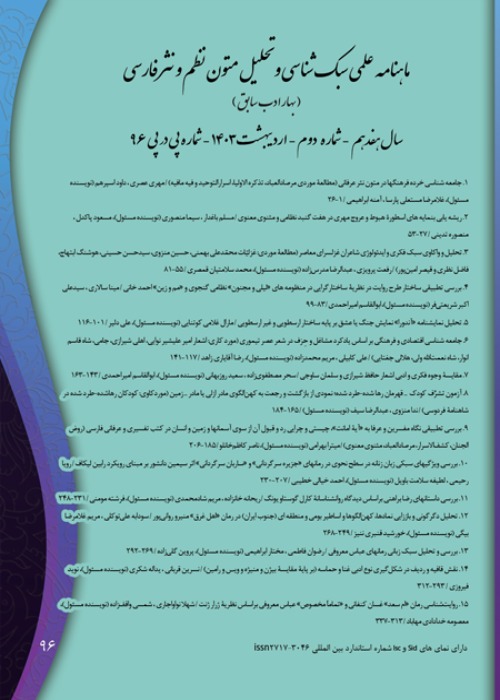A rhetorical comparative study of Gulistan of Sa’adi and Monsha’at of Qa’im Maqam Farahani
Gulistan of Sa’adi is among the literary works which has always been noticed and imitated to a great extent due to its specific features of structure and content. These imitations are sometimes seen in the content and other times in the prose and structure of the later works coming after Sa’adi. Qa’im Maqam Farahani is a politician who has been quite familiar with Gulistan and has considered it while authorizing his Monsha’at. This research has been conducted having the following goals: realizing the depth of impact ability of Qa’im Maqam from spiritual music of Gulistan, comparing Gulistan and Monsha’at in the use of rhetorical figures, recognizing the similarities and differences in expression style of Sa’adi and Qa’im Maqam, and understanding the type of intertextuality.
This research has been done in a descriptive-analytical manner. In order to do so, rhetorical figures containing: simile, metaphor, kenning, and trop are extracted and counted and then are analyzed and compared based on some drawn diagrams. The study area is the first hundred pages of Gulistan and Monsha’at.
In this book of Qa’im Maqam, in addition to some of Sa’adi’s expressions and poems, imitations of structural qualities of Gulistan can be also detected in the prose poem. Qa’im Maqam has mostly followed Sa’adi in terms of using figures of speech such as rhyming prose and monophony, but he has not pursued the expressive rhetorical figures used in Gulistan. The biggest difference between Sa’adi and Qa’im Maqam is in the use of kenning. kenning has a higher frequency in Gulistan than in Monsha’at. This is due to the thematic difference between the two works, which implies the speech to be clearer and leads the kenning of the speech to be more ambiguous.
Qa’im Maqam has consumed more extensive similes in comparison to Sa’adi. It also seems that he has used less metaphors but more similes in general than any other rhetorical figures in his own Monsha’at. Also, the use of metaphor, trop, and kenning is spotted less in Monsha’at. The general result is that Qa’im Maqam has been influenced by the internal music of Gulistan rather than its spiritual music.
- حق عضویت دریافتی صرف حمایت از نشریات عضو و نگهداری، تکمیل و توسعه مگیران میشود.
- پرداخت حق اشتراک و دانلود مقالات اجازه بازنشر آن در سایر رسانههای چاپی و دیجیتال را به کاربر نمیدهد.


